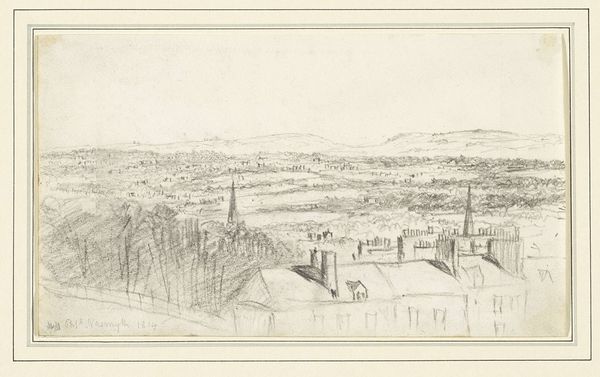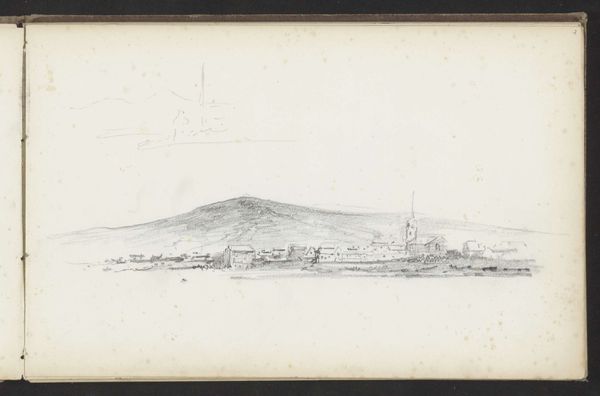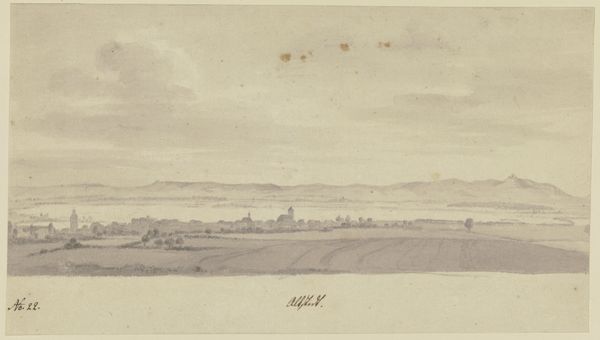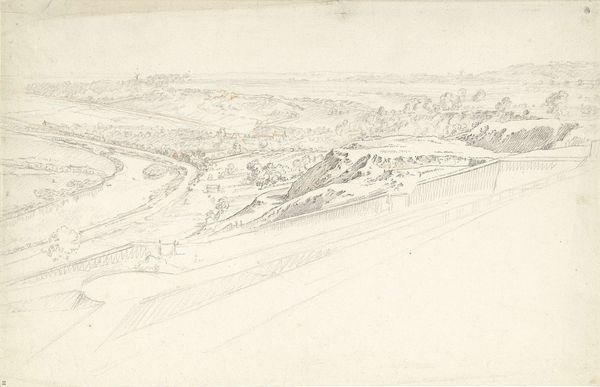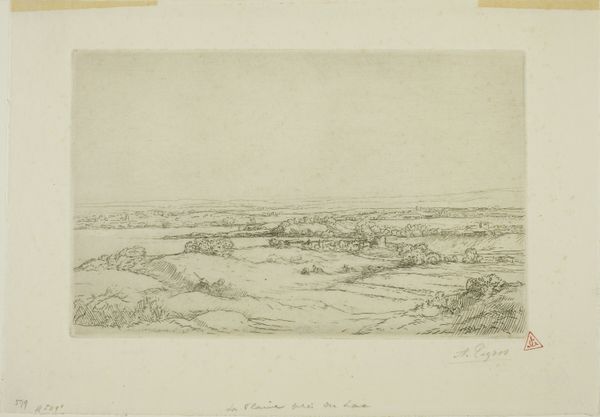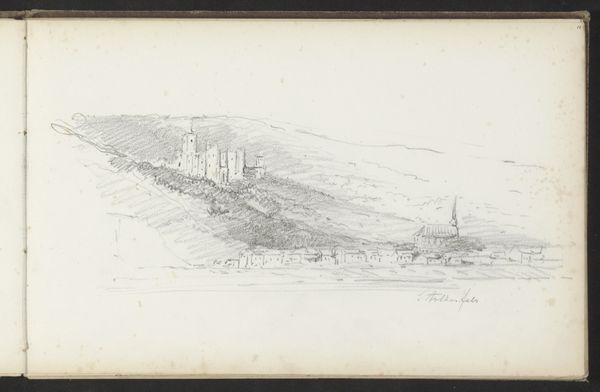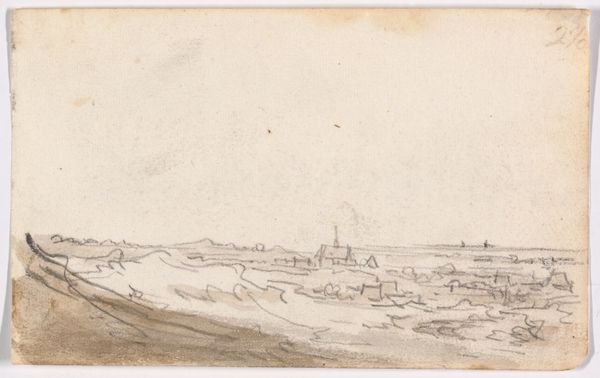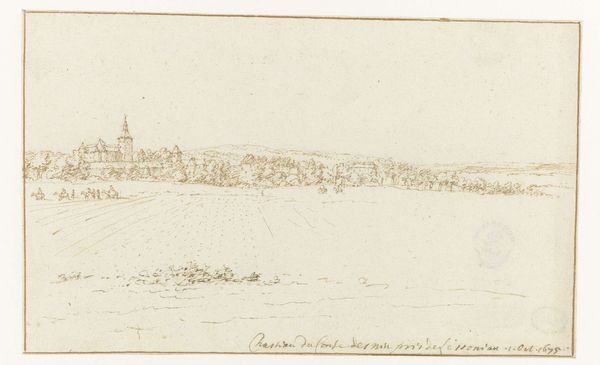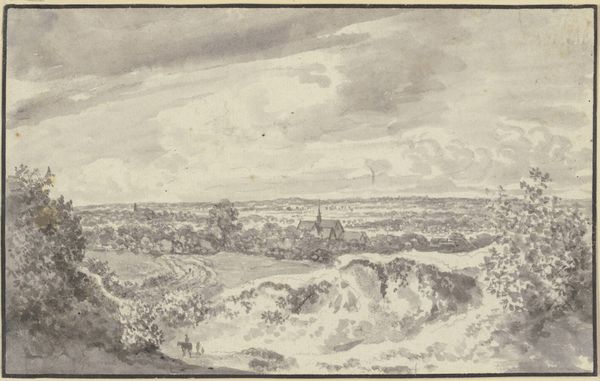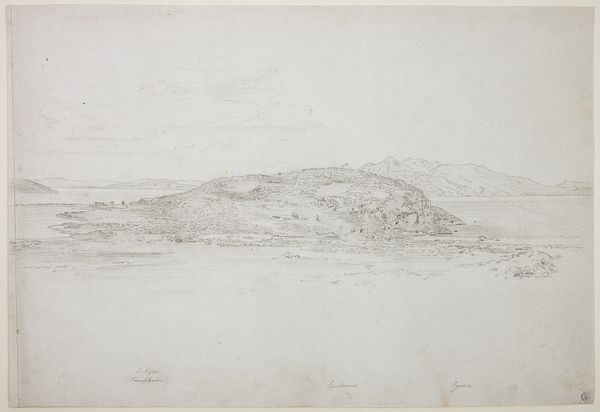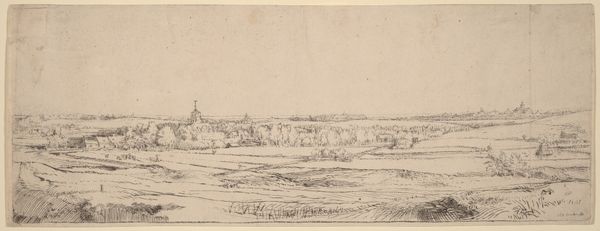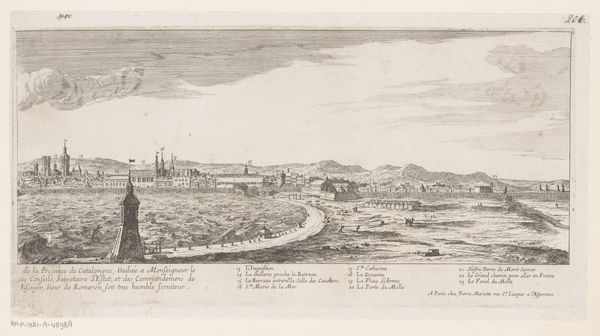
drawing, watercolor
#
drawing
#
landscape
#
etching
#
watercolor
#
romanticism
#
watercolor
Dimensions: 117 mm (height) x 184 mm (width) (bladmaal)
Curator: This is J.P. Møller's "Maglebye og Klintholm på Møen," created in 1814, using watercolor and drawing techniques. What is your immediate take on this vista? Editor: There’s a definite tranquility; an almost serene quality that speaks to a human connection with the land. Despite the modest palette, I find it compelling. Curator: Møller has captured a nuanced representation of the Danish landscape. The composition leads the eye deliberately, doesn’t it? Note how the slightly elevated viewpoint shapes our understanding of the terrain as orderly, manageable. Editor: Indeed, it reads like a carefully managed vista, even curated in some sense. Given the context of 1814, just after Denmark ceded Norway, one wonders about this idyllic portrayal. What social structures allowed for, or depended on, this ordered vision? It evokes a strong sense of ownership. Curator: An intriguing point. And consider the way the limited color palette is leveraged. These shades of sepia—achieved with watercolor and subtle linework—aren’t merely descriptive; they bring a unified aesthetic. Observe, for instance, how the gradations within the earth mimic the tones in the sky, creating a sense of harmonic totality. Editor: It is harmonious, yes, but harmony at what cost? Who benefits from such stability? Who doesn’t? When we think about the era in which Møller worked, questions around class and land ownership become crucial. Landscape paintings rarely are simply landscapes, are they? Curator: Perhaps not. Yet there is also value in noting how the artist uses delicate line work and washes of color to define the features of the terrain. It really demonstrates skilled application in compositional choices and materiality, regardless of subject matter. Editor: Yes, it's certainly thought-provoking on a multitude of levels, the artist’s deliberate focus is plain. Curator: Thank you for your considerations; it offers much to ponder as one considers it as an art object. Editor: An artwork never exists in a vacuum, after all; let's encourage such dialog when reflecting upon works of the past.
Comments
No comments
Be the first to comment and join the conversation on the ultimate creative platform.
